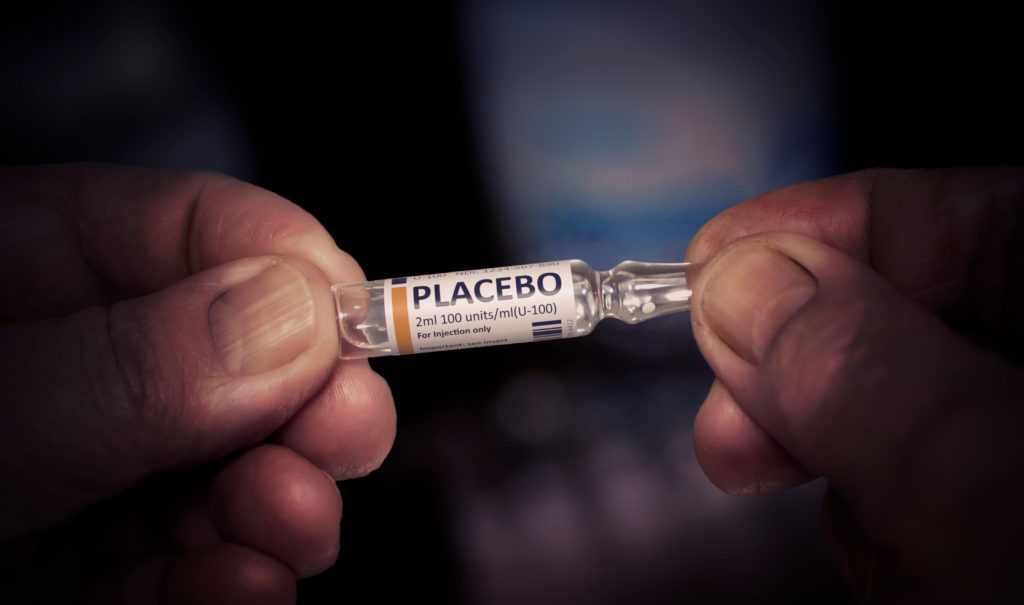How can we improve trial success rates and get medicines to patients faster? It starts with understanding and addressing the placebo response – a problem that has plagued drug development for decades. To continue tackling the question, Cognivia recently hosted a virtual panel discussion with key opinion leaders in diseases known to have high placebo response rates: osteoarthritis and Parkinson’s disease.
In this panel, the experts shared their perspectives from real-world trials on both classical and new approaches to manage the placebo response – and some questions arose throughout the discussion. While we answered many live on the webinar, we recap some of the most interesting questions below and bring a few more questions (and answers) to the table.
The following questions and answers have been compiled from the Cognivia team as well as our expert speakers:
- David Hunter, PhD, who provides insight into Osteoarthritis
- Olivier Rascol, MD, PhD, who provides insight into Parkinson’s disease
- Graham Bunn, PhD, who provides insight from the industry perspective
Answers have been edited and summarized for clarity.
#1. What is the durability of the placebo response?
Just as a drug’s effect can last for a certain period of time, so does the placebo effect. The assumption is that the durability of the placebo effect is not as high as the drug effect, but the reality is the placebo response has been shown to be durable for twelve months or longer. This is because the placebo effect – a component of the overall placebo response – produces real, beneficial, neurobiological events that induces a change in symptoms. The mechanism of this is still being understood, but, generally, when you take a sham treatment and experience a positive response, that response is indeed transient over time – just as a drug response may be.
#2. In Parkinson’s disease specifically, how does the placebo response evolve with the disease and symptom severity?
As Rascol cites in the webinar, Christopher Goetz and his Chicago-based team conducted a review of 11 placebo-controlled RCTs with about 900 patients across different stages of the disease and various treatment interventions. In this review, there was no evidence of reduction over time of the placebo response during the studies. In Parkinson’s, the disability increases dramatically as the disease progresses. Even so, the placebo response proved stable over time despite this increase in severity.
Hunter puts it this way: “[The placebo effect] appears to be of a similar magnitude that doesn’t appear to diminish over time. So it’s really important we take that into account with our trial designs.”
#3. How does investigator behavior influence the placebo response?
In addition to the evidence of biological and psychological factors contributing to the placebo effect as a part of the placebo response, factors in the patient’s environment may also impact the overall placebo response. Most researchers can attest to the variations in clinical data between clinical trial sites, depending on factors like physician empathy, staff beliefs and clinical site surroundings. These factors can contribute to a patient’s expectations and heighten their placebo responsiveness.
This presents an interesting and complicated conundrum for clinical practitioners engaging in clinical trials.
“In a clinical practice, we try to be as encouraging as possible and positive to enhance the response, regardless of if it is placebo or directly related to the activity of the drug in the trial,” says Rascol.
Hunter agrees: “We’re trying to be positive. We’re trying to reinforce the impact that the treatment may have, and obviously try to engage the patient in an ongoing, solid relationship where they have great faith and expectation both in you but also in the treatments that you’re administering.”
The problem is, this encouragement does not minimize potential placebo response. On the flip side, if you try to be neutral, you risk inducing a nocebo response. Rascol adds: “Nowadays, studies are so demanding and complex with such a burden – if you are not encouraging the patients and raising their expectations, they would say, ‘Okay, so what is the point? I’m not going to enter into the study.’”
It’s a tricky balance: encouraging patients in order to recruit and retain them, while minimizing their potential placebo response.
#4. With the trend of increasing clinical trial diversity, is there expected to be an impact on placebo response rates?
An increase in clinical trial diversity means there will be more patients that are more different from each other. When you have more patient differences, it can look like placebo response when it translates into more regression to the mean. This doesn’t mean there’s a real placebo effect occurring.
Here’s another way to look at it. Increasing diversity naturally increases data variability – not necessarily placebo response, but certainly noise in the data. The better you can characterize these differences, the better you can avoid the data-related pitfalls of having a more diverse data population. Technology like Placebell can help explain the differences between patients in statistical analysis.
#5. Can a combination of tactics be used to tackle the placebo response problem in pain?
The short recommendation is: Yes, a combination of tactics should be considered to tackle the placebo response problem in pain.
“In general, we [have used] one particular methodology in a particular trial, simply because we want to understand at that point in time what impact that methodology might have,” says Hunter. “I think if we can apply more than one, we’re likely to see better results.”
#6. Decentralized studies or hybrid trials are becoming more and more prolific, and placebo response in decentralized clinical trials is still unknown. How can technology help us mitigate the influence of the placebo response?
Bunn reflects on the state of decentralized clinical trials: “Some patients do like to see sites, and that impacts the way that they respond. Others actually are quite happy to work at home on a clinical trial and enter their data.”
Either way, technology can certainly be used to mitigate the influence of the placebo response in decentralized clinical trials. This starts first with using technology to determine when DCTs are most appropriate and how the change in format may impact the patient’s behavior and response.
“Technology is becoming more and more accepted. If you look at the way that Placebell works, in that it is asking patients questions – that’s become a very standard technology nowadays for people. ePRO, eCOA type technology is very common, so people are getting more and more used to answering those types of questions. We are [also] collecting more and more real-world data and getting used to the fact that we can run machine learning over that data.”
The insights we can garner from technology and apply to clinical trials (decentralized or not) is a clear opportunity.
Conclusion
In the virtual discussion, we examined placebo response in osteoarthritis and Parkinson’s disease, as well as took a higher-level view of placebo response from the industry perspective. For more insights, you can request to view the recording here. And if you have any additional questions not covered here, please contact us!
Placebell©™ is a proven solution for assessing patient psychology, calculating placebo responsiveness and defining covariates in a statistical analysis. Powered by advanced machine learning models, the Placebell approach poses no mathematical or operational negative impact on your trial or data. Get in touch today.





